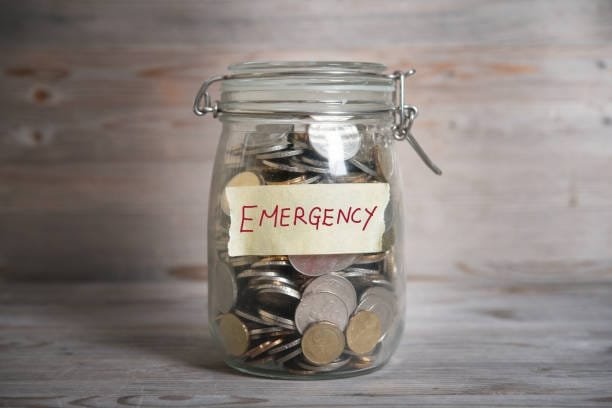Now Reading: ✂️ How to Cut Monthly Expenses Without Sacrificing Lifestyle
- 01
✂️ How to Cut Monthly Expenses Without Sacrificing Lifestyle
✂️ How to Cut Monthly Expenses Without Sacrificing Lifestyle

🌟 Introduction
Cutting expenses doesn’t mean giving up everything you enjoy. With smart strategies, you can reduce costs while maintaining your quality of life. This guide will show you how to trim your monthly budget without feeling deprived.

1. Review Your Budget and Identify “Leaky” Expenses
Start by understanding where your money goes.
📝 How to Analyze Spending:
- Track Expenses: Use free apps like Mint, YNAB, or PocketGuard.
- Check Bank Statements: Look for recurring charges or impulse purchases.
- Sort by Category: Housing, utilities, groceries, entertainment, and subscriptions.
💡 Tip: Focus on areas where you overspend without realizing it.
2. Cancel Unused Subscriptions
Many people pay for services they rarely use.
📺 How to Cut Subscription Costs:
- Audit Your Subscriptions: Check app store payments and bank statements.
- Keep Only Essentials: Cancel duplicate or unnecessary streaming services.
- Share Accounts: Split costs with family or friends where possible.
💡 Tip: Use apps like Trim or Truebill to find and cancel unused subscriptions.
3. Lower Utility Bills
Small changes can lead to big savings on utilities.
💡 Energy-Saving Tips:
- Use LED Bulbs: They consume less power and last longer.
- Adjust Thermostat: Lower heating/cooling when you’re away.
- Unplug Devices: Electronics drain power even when off.
- Water-Saving Fixtures: Install low-flow showerheads and faucets.
💡 Tip: Ask your utility company about energy-saving programs.
4. Reduce Grocery Bills Without Sacrificing Quality
Groceries are a major expense, but smart shopping saves money.
🛒 How to Save on Food:
- Make a Meal Plan: Avoid impulse buys by planning weekly meals.
- Buy in Bulk: Stock up on non-perishables like rice, pasta, and canned goods.
- Use Coupons & Cashback: Apps like Rakuten, Ibotta, and Flipp help save.
- Shop Store Brands: Generic products are often just as good as name brands.
- Avoid Pre-Packaged Foods: Cooking from scratch is cheaper and healthier.
💡 Tip: Stick to your shopping list to avoid overspending.

5. Cut Transportation Costs
Transportation expenses can be reduced without sacrificing convenience.
🚗 How to Save on Travel:
- Carpool: Share rides with colleagues or neighbors.
- Use Public Transit: Cheaper than driving, especially for daily commutes.
- Maintain Your Car: Regular servicing prevents costly repairs.
- Combine Trips: Plan errands to reduce driving.
💡 Tip: If you work remotely, reduce car usage even further.
6. Save on Insurance Premiums
Insurance is essential, but you can lower costs.
🛡️ How to Reduce Premiums:
- Shop Around: Compare quotes using sites like Policygenius or The Zebra.
- Bundle Policies: Combine auto, home, and renter’s insurance for discounts.
- Increase Deductibles: Higher deductibles mean lower monthly premiums.
- Ask for Discounts: Many companies offer safe driver or loyalty discounts.
💡 Tip: Review your policies annually to find savings opportunities.
7. Cut Entertainment Costs Without Missing Out
Entertainment doesn’t have to break the bank.
🎬 Affordable Fun Ideas:
- Free Events: Check community calendars for free festivals and activities.
- Library Resources: Many libraries offer free books, movies, and classes.
- DIY Entertainment: Host movie nights, game nights, or potlucks at home.
- Limit Dining Out: Cook at home and reserve dining out for special occasions.
💡 Tip: Look for happy hour deals or restaurant coupons when dining out.
8. Lower Credit Card and Loan Payments
Debt can eat into your budget, but there are ways to reduce payments.
💳 How to Manage Debt:
- Refinance Loans: Look for lower interest rates.
- Consolidate Debt: Combine multiple debts into one lower monthly payment.
- Negotiate Rates: Call creditors and ask for reduced interest.
- Pay More Than the Minimum: This reduces overall interest.
💡 Tip: Use the debt snowball or debt avalanche method for faster repayment.
9. Save on Healthcare Expenses
Healthcare costs can be significant, but you can find savings.
🏥 How to Reduce Medical Bills:
- Choose Generic Medications: They’re cheaper but just as effective.
- Use Telemedicine: Virtual visits often cost less than in-person appointments.
- Check for Assistance: Ask providers about payment plans or discounts.
- Use Health Savings Accounts (HSA): Tax-free savings for medical expenses.
💡 Tip: Always ask for an itemized bill to spot overcharges.
10. Build Savings with Your Extra Cash
Once you’ve cut expenses, put the savings to good use.
💰 How to Grow Savings:
- Automate Savings: Set up auto-transfers to a high-yield savings account.
- Start an Emergency Fund: Aim for at least $500, then build from there.
- Invest Wisely: Consider Robo-Advisors like Betterment or Wealthfront.
- Save for Goals: Allocate funds for vacations, holidays, or future needs.
💡 Tip: Even saving $20–$50 per month adds up over time.

🌟 Conclusion
Cutting monthly expenses doesn’t mean sacrificing your lifestyle. By tracking spending, canceling unused services, shopping smart, and maximizing savings, you can enjoy life while keeping more money in your pocket.
Start with one or two tips today, and watch your savings grow!




























